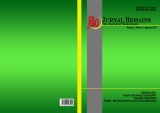Organogenesis Kelapa Sawit (Elaeis guineensis Jacq.) Asal Eksplan Bunga Betina
DOI:
https://doi.org/10.24114/jbio.v2i2.4223Abstract
The objectives of this research were to composed organ from callus culture and to found the best concentration of plant growth regulator for organ growth from female flower explant of oil palm. This research has already done from June 2014 to May 2015 at Laboratory of Plant Physiology and Tissue Culture Department of Biology Faculty of Mathematics and Science University of North Sumatera. This research used Nonfactorial Completely Random Design. Explant was treated with five concentrations of 2,4-Dichlorophenoxy acetic acid (2,4-D; 99, 110, 120, 132, and 140 mg/L) for callus induction on Y3 medium (Eeuwens 1976). The result of this research showed that organ was formed from this treatment (basal segment of female flower explant) was root organ. 2,4-D plant growth regulator positively affected to growing of the root. The best result for time of callus induction, time of root growth, the highest percentage of explants that formed the root, fresh weight and dry weight of callus that has become the root generation was resulted from 99 mg/L 2,4-D. Key words: Elaeis guineensis Jacq., female flower, plant growth regulator 2,4-D, organogenesisDownloads
Published
Issue
Section
License
For Authors Jurnal Biosains agree to the following terms:
Authors retain copyright and grant the Jurnal Biosains (JBIO) right of first publication with the work simultaneously licensed under a Creative Commons Attribution License (CC BY-SA 4.0) that allows others to share (copy and redistribute the material in any medium or format) and adapt (remix, transform, and build upon the material) the work for any purpose, even commercially with an acknowledgement of the work's authorship and initial publication in JBIO (Jurnal Biosains)
Authors are able to enter into separate, additional contractual arrangements for the non-exclusive distribution of the journal's published version of the work (e.g., post it to an institutional repository or publish it in a book), with an acknowledgement of its initial publication in JBIO (Jurnal Biosains)
Authors are permitted and encouraged to post their work online (e.g., in institutional repositories or on their website) prior to and during the submission process, as it can lead to productive exchanges, as well as earlier and greater citation of published work (See The Effect of Open Access).


